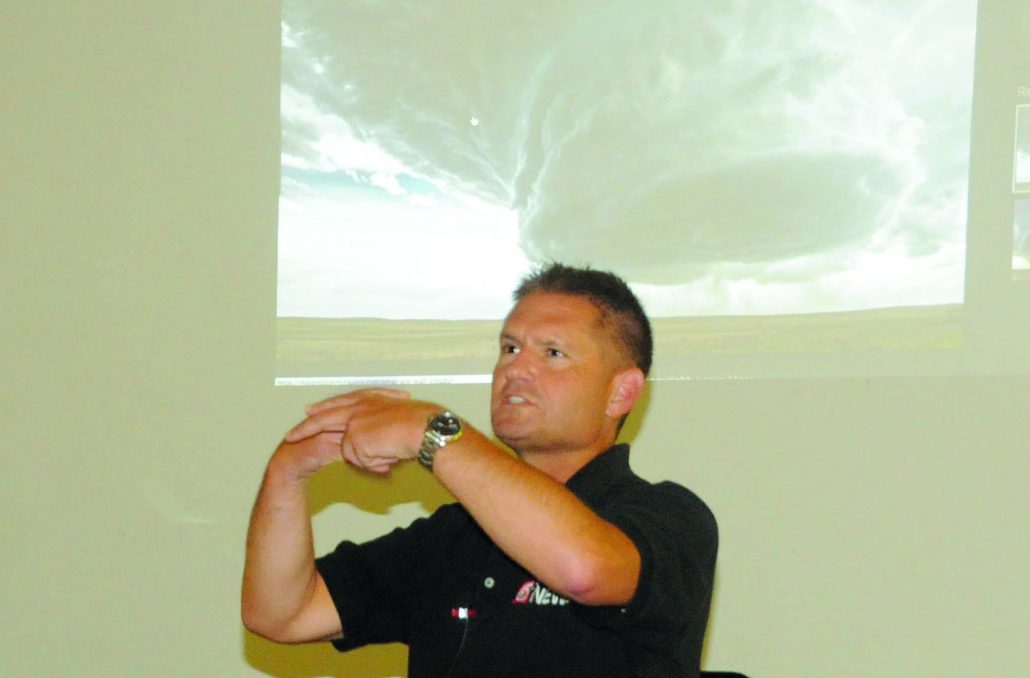
KSTP meteorologist takes residents inside a thunderstorm
By Per Peterson
Meteorologist and stormchaser Jonathan Yuhas, who has been at KSTP-TV for 11 years, shared his expertise of storms and tornadoes with a large crowd at The Caboose on Saturday afternoon as part of the city of Tracy’s commemoration of the 50th anniversary for the June 13, 1968 tornado.
“These big F5 tornadoes are maybe a little more common in this part of the world than we think,” Yuhas said. “You live in the part of Minnesota that is most prone to F5 tornadoes. You know about the Chandler tornado of 1992, you know about the Comfrey tornado of 1998, which was an F4. It may be elevation related, and that might enhance some of these storms.”
Yuhas showed an animated video that detailed why some thunderstorms produce tornadoes while others don’t. He also showed, live footage of KSTP’s coverage of the Tracy tornado. Yuhas pointed out that in some of the live shots from the broadcast, Tracy residents can be seen wearing light jackets, a subtle note, he pointed out, that in part explains how tornadoes occur. He said June storms are the result of winter not wanting to let go and summer trying to begin.
Yuhas said in June, nature has a lot of energy coming from the sun. That energy, he said, is expelled through thunderstorms.
“When we still have a winter hangover per sé with cooler air sitting over Canada and we still have that warm, humid air coming up from the south — those two clash together,” he said. “The reason why we don’t have severe weather in September is because the sun angle is a lot lower in September.”
Specific to Tracy, Yuhas said the F5 was the result of a thunderstorm that “basically dropped to the ground,” he said. “That rotating part of the back of the thunderstorm came down and that’s what got you.”
A veteran meteorologist of 26 years, Yuhas said tornadoes in general are black or dark when they’re coming at you and white when they are going away from you. He said you can tell when a tornado is near the end of its life when it makes a left or right turn.
“Usually they take a turn to the right — that’s their death stage,” he said. “Tornadoes mostly spin counterclockwise and as a storm system starts to fall apart, eventually the storm cloud comes crashing down. That’s why some storms give you a push of cold air.”
